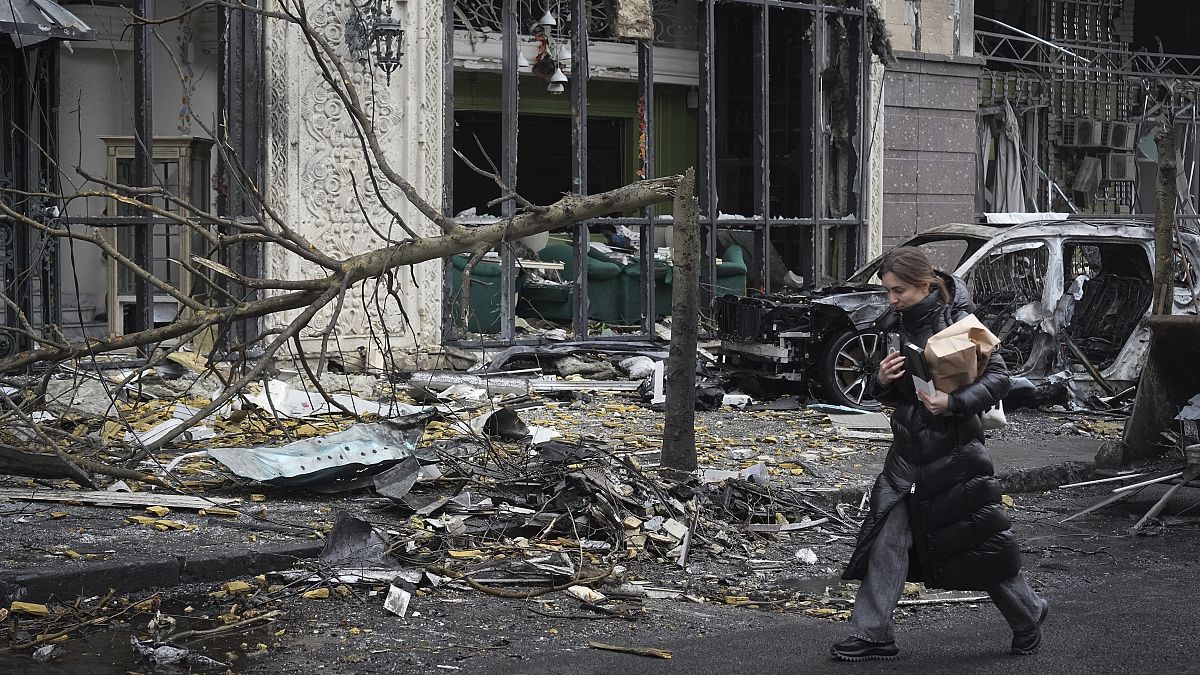Arizona Gov. Katie Hobbs talks about 2025 legislative session
Gov. Katie Hobbs talks about affordability, safety, Arizona’s water future and building relationships with new members of the state Legislature.
A coalition of environmental organizations has described what it wants to see from Arizona lawmakers this year.
During a news conference on Wednesday, the coalition of 35 organizations laid out its vision for Arizona’s 2025 legislative session. The group, coordinated by the Sierra Club, also released a written set of priorities.
Sandy Bahr, director of the Sierra Club’s Grand Canyon Chapter, said the organizations are already working on legislation to address most of the stated priorities. Many organizations in the coalition regularly advocate their policy preferences at the state capitol and work with legislators on new laws.
“We will collaborate with our elected leadership at every level to work towards having cleaner air and heat mitigation efforts to ensure a future where Arizonans don’t face extreme heat for longer periods of time in the years ahead,” said Vania Guevara, advocacy and political director at Chispa Arizona.
Organizations and some lawmakers bemoaned what they described as a pattern of inaction from Arizona’s historically Republican-dominated Legislature.
“I call on my Republican counterparts, as the majority in this Legislature, to hear the bills we introduce … and to pass them. Will this session in 2025 be a departure from prior activity?” said Arizona Senate Democrat and Minority Leader Priya Sundareshan of Tucson.
No Republican lawmakers spoke at the conference.
The coalition, which includes some faith-based and social issue groups as well as environmental organizations, called on the Legislature to address climate change, protect the state’s water resources, protect vulnerable populations, and add more environmental considerations to state and local government actions.
Arizona’s legislative session begins Monday. Republicans will have a 17-13 majority in the Senate and a 33-27 majority in the House, making both bodies redder than they were in 2024.
Legislature in 2024: The fate of Arizona’s recent environmental legislation: 25 bills introduced, one new law
Climate, water, environmental justice are on the list
The coalition’s specific priorities include:
- Support Gov. Katie Hobbs’s Office of Resiliency. The coalition wants legislators to put more money toward the governor’s response to extreme heat and the office’s work to develop a climate action plan for the state. The groups would also like the removal of Arizona laws keeping the state from measuring or limiting greenhouse gas emissions.
- Electrify transportation. The coalition wants Arizona lawmakers to pass bills that promote investment in transportation electrification, including electric school and transit buses and more robust electric-vehicle charging infrastructure.
- Regulate rural groundwater: The coalition wants laws enabling the measurement and limitation of groundwater pumping throughout Arizona, including in rural areas where pumping has contributed to land subsidence and depleted stream flows. Bahr told The Arizona Republic in an email that the coalition is involved with a bill to accomplish this goal.
- Protect riparian ecosystems: The coalition wants amendments to Arizona laws to protect water in Arizona’s waterways specifically to support local ecosystems. Specifically, the groups want the Legislature to modify the state’s surface water quality program to include seasonal streams and washes. The group also wants lawmakers to appropriate more funding for the state to address a backlog of polluted water systems and put them on a path to meeting water quality standards. The coalition is working on legislation to accomplish these goals and to establish “ecological” flows in streams and rivers as a beneficial use, so water rights holders can legally use their water to prop up ecosystems.
- Support vulnerable groups: The organizations want a state-level version of the Biden Administration’s Justice40 Initiative, ensuring that 40% of state investments in areas like renewable energy and housing go to communities already grappling with pollution and/or a historic lack of investment. The groups also want the state to pass legislation that defines “overburdened communities” in Arizona as those with “with significant non-white, non‒English-speaking, or low-income populations” and require companies seeking air quality, waste, and water quality permits in those communities to prepare “Environmental Justice Impact Statements.” The coalition is working on a bill to do that, according to Bahr.
- Consider environmental impacts to government actions: The groups want a state-level version of the federal National Environmental Policy Act, which would require the state and local governments to assess the environmental impacts of proposed actions before committing to them. Those processes would involve public participation and consultation with tribes. The groups also want a state-level endangered species program to protect species not addressed under the federal Endangered Species Act.
Austin Corona covers environmental issues for The Arizona Republic and azcentral. Laura Gersony covers national politics for The Arizona Republic and azcentral. Send tips or questions to austin.corona@arizonarepublic.com or laura.gersony@gannett.com.
Environmental coverage on azcentral.com and in The Arizona Republic is supported by a grant from the Nina Mason Pulliam Charitable Trust.
Sign up for AZ Climate, our weekly environment newsletter, and follow The Republic environmental reporting team at environment.azcentral.com and @azcenvironment on Facebook and Instagram.




































